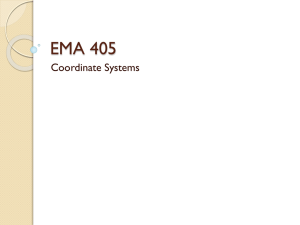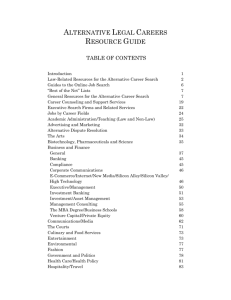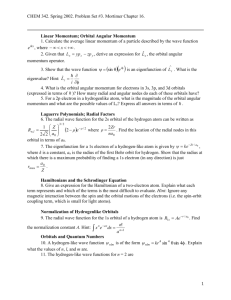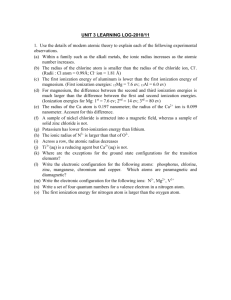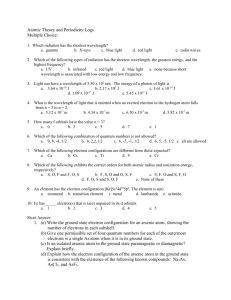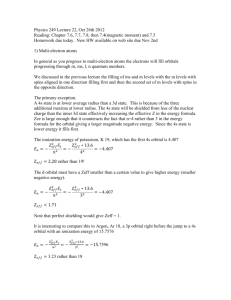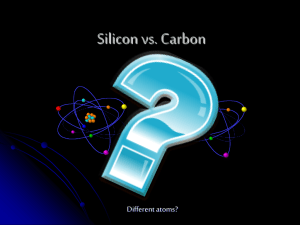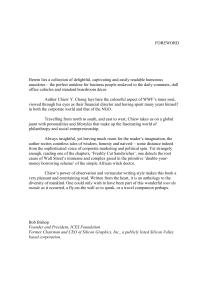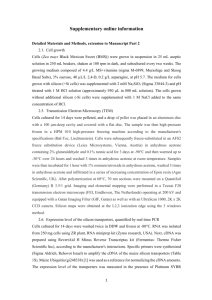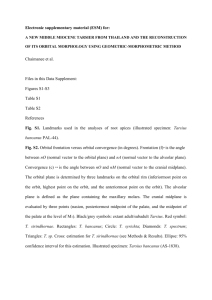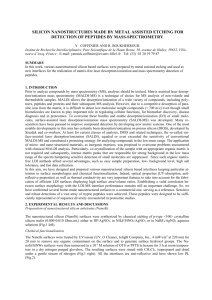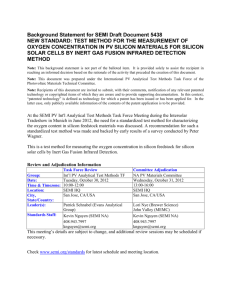Third quiz
advertisement
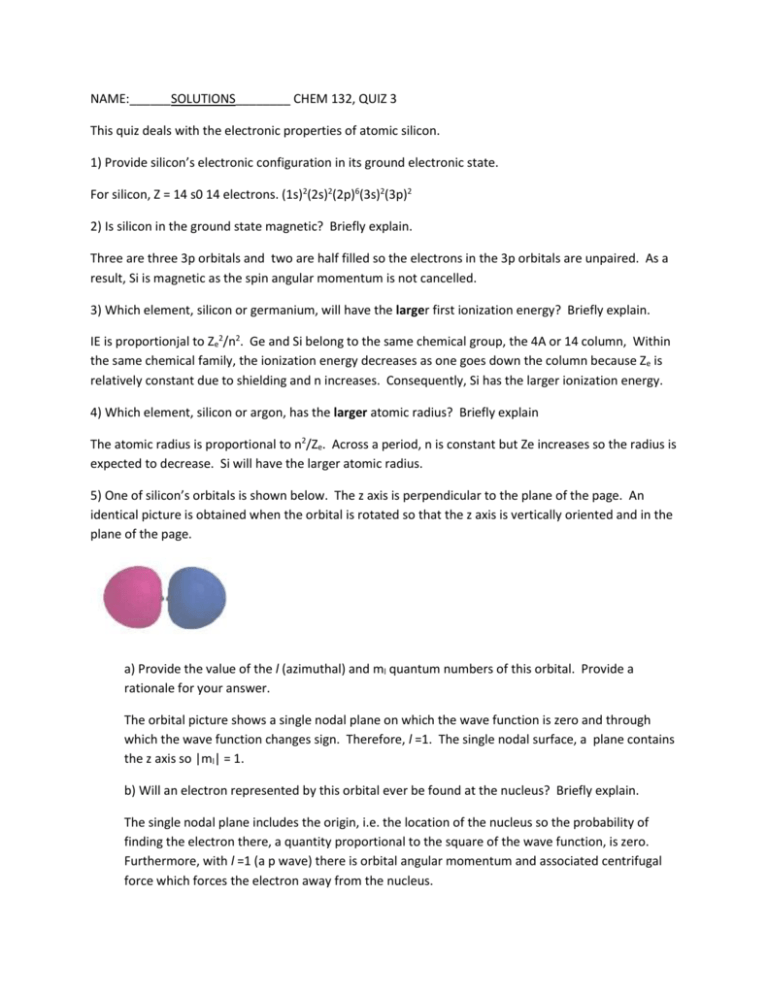
NAME:______SOLUTIONS________ CHEM 132, QUIZ 3 This quiz deals with the electronic properties of atomic silicon. 1) Provide silicon’s electronic configuration in its ground electronic state. For silicon, Z = 14 s0 14 electrons. (1s)2(2s)2(2p)6(3s)2(3p)2 2) Is silicon in the ground state magnetic? Briefly explain. Three are three 3p orbitals and two are half filled so the electrons in the 3p orbitals are unpaired. As a result, Si is magnetic as the spin angular momentum is not cancelled. 3) Which element, silicon or germanium, will have the larger first ionization energy? Briefly explain. IE is proportionjal to Ze2/n2. Ge and Si belong to the same chemical group, the 4A or 14 column, Within the same chemical family, the ionization energy decreases as one goes down the column because Ze is relatively constant due to shielding and n increases. Consequently, Si has the larger ionization energy. 4) Which element, silicon or argon, has the larger atomic radius? Briefly explain The atomic radius is proportional to n2/Ze. Across a period, n is constant but Ze increases so the radius is expected to decrease. Si will have the larger atomic radius. 5) One of silicon’s orbitals is shown below. The z axis is perpendicular to the plane of the page. An identical picture is obtained when the orbital is rotated so that the z axis is vertically oriented and in the plane of the page. a) Provide the value of the l (azimuthal) and ml quantum numbers of this orbital. Provide a rationale for your answer. The orbital picture shows a single nodal plane on which the wave function is zero and through which the wave function changes sign. Therefore, l =1. The single nodal surface, a plane contains the z axis so |ml| = 1. b) Will an electron represented by this orbital ever be found at the nucleus? Briefly explain. The single nodal plane includes the origin, i.e. the location of the nucleus so the probability of finding the electron there, a quantity proportional to the square of the wave function, is zero. Furthermore, with l =1 (a p wave) there is orbital angular momentum and associated centrifugal force which forces the electron away from the nucleus.


